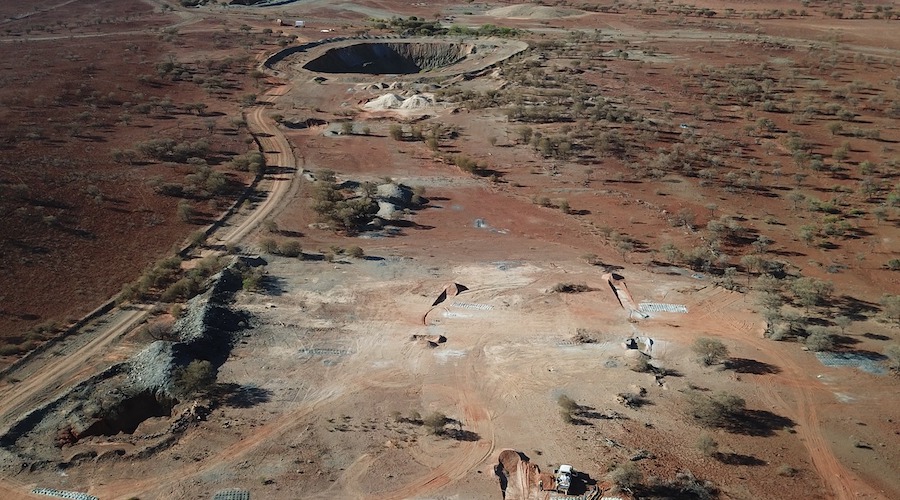
Tumblegum South is located about 40 kilometers south of the town of Meekatharra and along strike from the Tumblegum pit, which was mined by Dominion Mining during the 1987–1992 Gabanintha gold mine joint venture. The project was explored with a total of 49 holes for 5,640 meters of drilling between 2013 to 2019 and has a mineral (inferred) resource estimate that totals 600kt, at a grade of 2.2 g/t Au.
The Tumblegum South project is located about 40 kilometers south of the town of Meekatharra and has a mineral (inferred) resource estimate that totals 600kt, at a grade of 2.2 g/t Au
“The Tumblegum South project represents an early production opportunity, with an existing resource, and scope to further extend these values, with gold mineralization extending along strike and down dip,” the firm’s prospectus reads. “Current work is focused on co-operating with our potential processing and development partners to work out the fastest way to bring this deposit into production.”
Star Minerals’ documentation states that management is also holding discussions with a number of providers to accelerate the drilling, test-work and approvals programmes to define an indicated resource.
In year one, the project is expected to need approximately $1.2 million and in year two, over $900,000.
Star Minerals’ holding of Tumblegum South is part of a sales agreement executed with Bryah Resources (ASX:BYH) earlier this year in which the vendor received $500,000 in cash, 9 million shares in Star Minerals, and 7 million performance rights.
The deal also entailed that, subject to a successful IPO, Star Minerals has to acquire from Byrah one exploration licence in the Bryah Basin for an additional 2 million shares.
The license is located within the West Bryah project, which the company says represents an additional, 349-square-kilometer package of prospective ground. The ground is 140 kilometers north of Meekatharra and contains a package of Proterozoic metasediments and granitoids, disrupted by large-scale folding and faulting.
The license has seen intermittent exploration since the gold rush period of 1897 to 1911, the vast majority of this was prior to the 1990s and was focused on shallow gold mineralization.
“The area remains under-explored and it is conceivable that it hosts potential economic deposits,” Star Minerals’ report reads.




